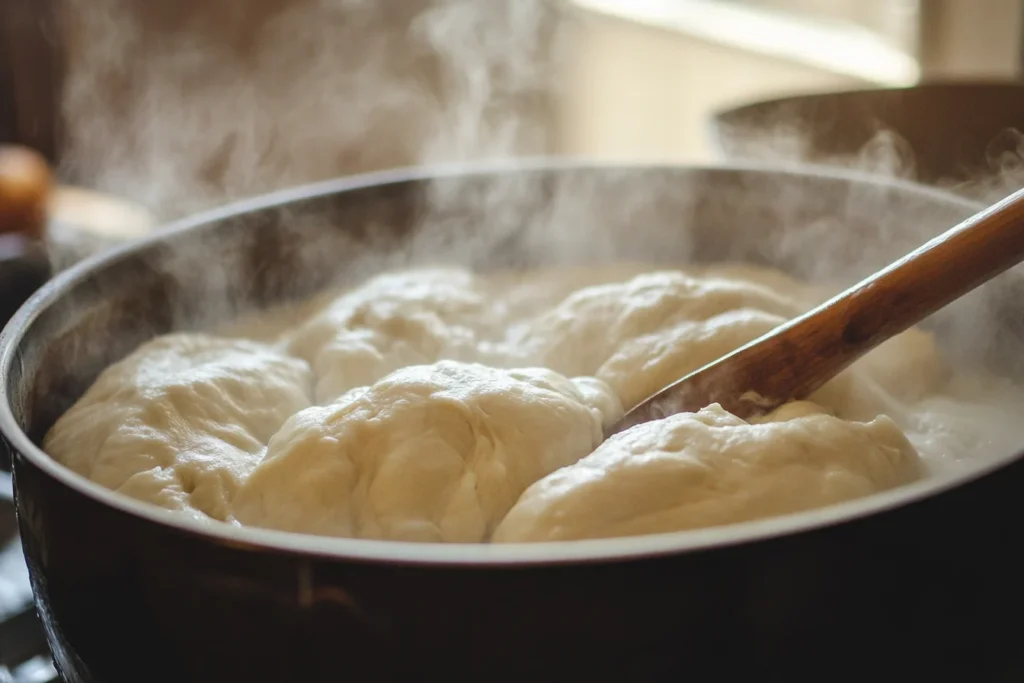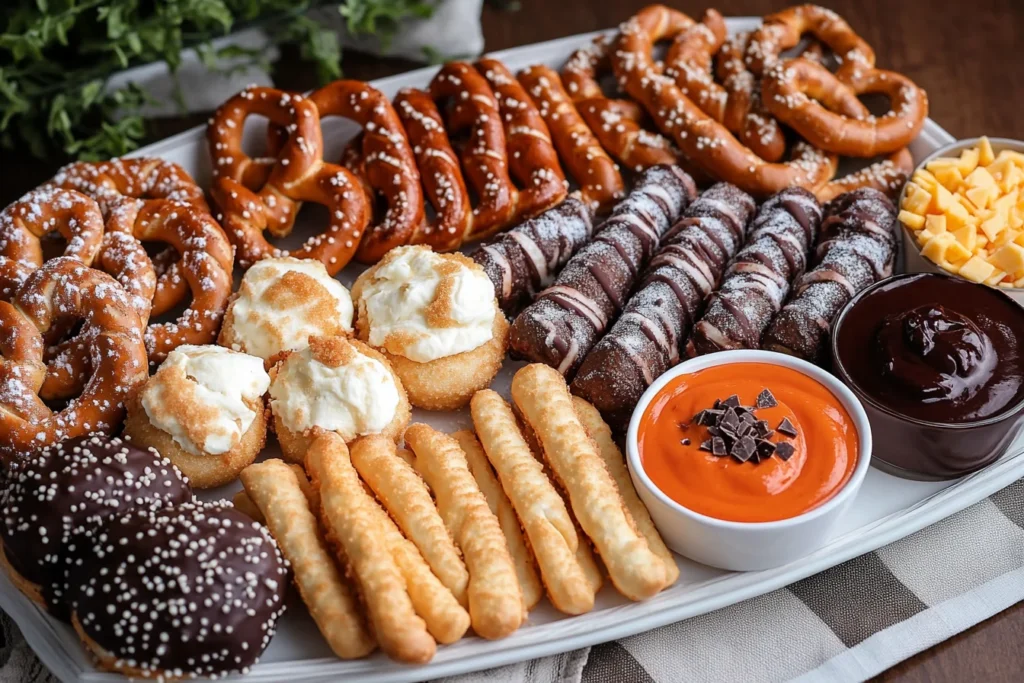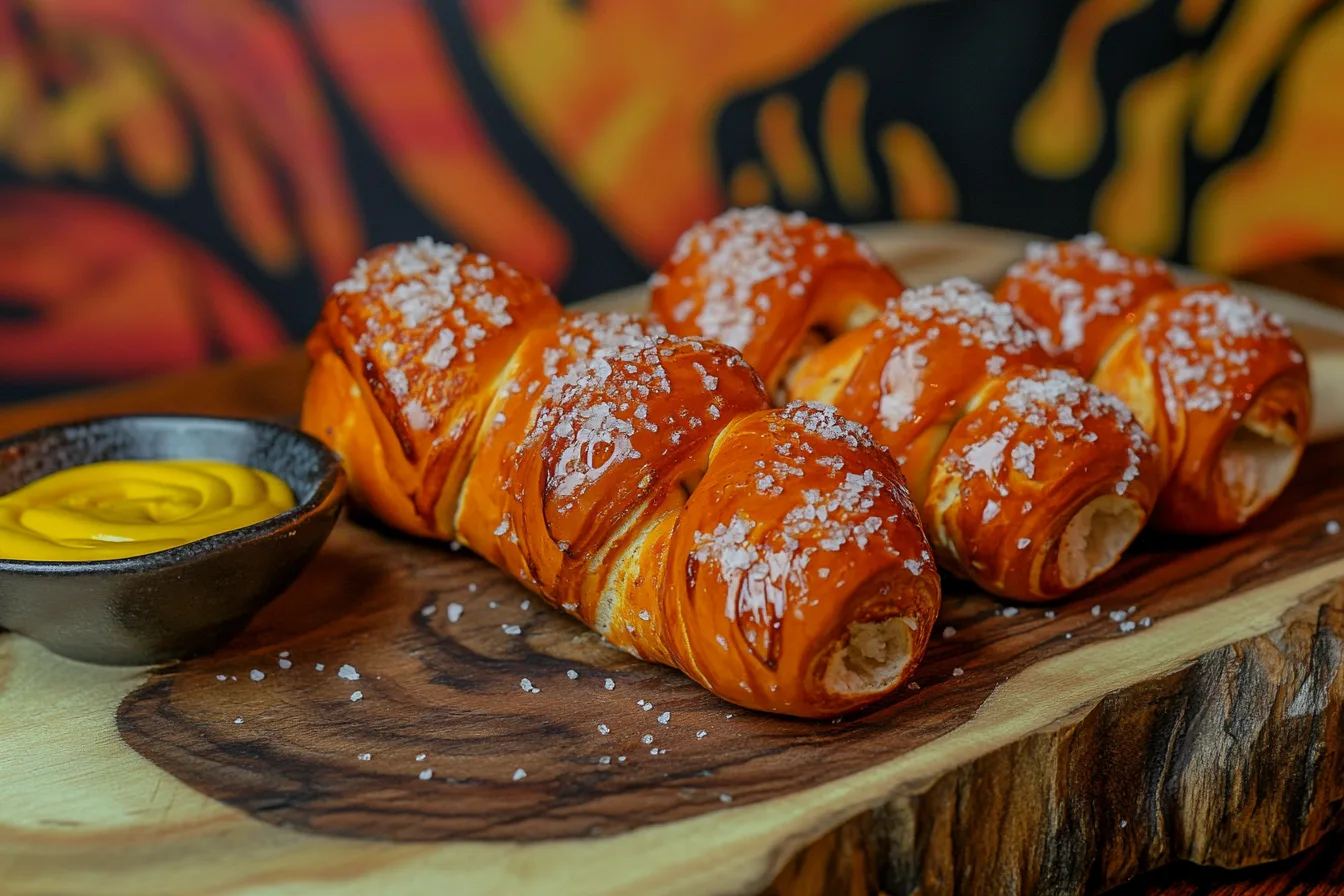Pretzels have long held a special place in the hearts of snack lovers worldwide. Their golden-brown crust, soft or crunchy texture, and iconic salty flavor make them truly unforgettable. But have you ever wondered, what is the secret ingredient in pretzels that sets them apart from other baked goods? In this article, we’ll unravel the mystery behind this beloved snack. From their fascinating history to the scientific secrets that make pretzels so distinctive, let’s dive into what makes these twisted treats so irresistible.
The History of Pretzels and Their Unique Taste
Origins of Pretzels
The story of pretzels dates back over a thousand years, steeped in legend and cultural significance. Believed to have originated in European monasteries, the first pretzels were said to be created by monks as a reward for children who learned their prayers. Their shape, resembling folded arms in prayer, carried symbolic meaning tied to Christianity.
By the Middle Ages, pretzels became a staple in European bakeries, particularly in Germany, where they were celebrated as a symbol of good luck and prosperity. Immigrants later brought the tradition to America, where pretzels have become a snack-time favorite.
Evolution of the Pretzel Recipe
While the earliest pretzels were simple flour-and-water creations, today’s pretzel recipes have evolved significantly. Bakers began experimenting with dough composition and cooking methods, adding yeast for fluffiness and incorporating salt for that signature bite. However, one key innovation — the use of an alkaline solution, such as lye or baking soda, before baking — truly revolutionized pretzels, giving them their characteristic flavor and texture.
From traditional hard pretzels to the soft, buttery varieties popular at fairs and malls, pretzels now come in countless forms. Yet, their distinctive taste and satisfying crunch remain timeless.
The history and evolution of pretzels tell a tale as rich and twisted as the snack itself. From their humble beginnings to their rise as a cultural and culinary icon, pretzels have a story that’s just as unique as their flavor. Ready to discover more about what is the secret ingredient in pretzels? Let’s explore the science and artistry behind their irresistible taste in the next section.
What is the Secret Ingredient in Pretzels?
Defining the Secret Ingredient in Pretzels

The Role of Alkaline Solutions in Pretzels
If you’ve ever wondered what is the secret ingredient in pretzels, the answer lies in an unexpected chemical process. Pretzels owe their unique crust and flavor to an alkaline solution, typically lye (sodium hydroxide) or baking soda. Before baking, pretzels are briefly boiled in this solution, which creates a fascinating reaction. This step alters the dough’s surface, enabling the Maillard reaction during baking. The result? That signature golden-brown crust and slightly tangy taste.
Lye, a strong base, has been the traditional choice in authentic pretzel recipes. However, for home bakers, baking soda is a safer and more accessible alternative. Both options break down proteins on the pretzel’s surface, paving the way for caramelization and that unmistakable aroma.
Other Ingredients That Enhance Flavor
While the alkaline solution is the star of the show, other ingredients play supporting roles in creating the perfect pretzel. Salt, for instance, isn’t just sprinkled on top—it’s also mixed into the dough to enhance the flavor from within. Yeast and sugar are also key players, balancing the saltiness with a hint of sweetness and contributing to the dough’s rise.
Surprisingly, some bakers add a secret twist by incorporating spices, herbs, or even cheese into their dough. These variations, though modern, respect the core principles of pretzel-making while offering unique flavor profiles. Want to experiment with your pretzels? Check out ideas like garlic butter pretzel sticks from recipes such as Pretzel Sticks Recipes Guide.
How Pretzels Differ from Other Baked Goods
Comparison with Bagels and Bread
Pretzels may look similar to other baked goods, like bagels or artisan bread, but their preparation sets them apart. Unlike bread, which is typically baked directly after proofing, pretzels undergo a critical boiling step. Bagels share this technique, but the difference lies in the boiling medium. Bagels are often boiled in sweetened water, which creates a soft, chewy texture, while pretzels rely on their alkaline bath to develop a firmer crust and bolder flavor.
Additionally, pretzels are shaped into distinctive knots or twists, which not only enhances their aesthetic appeal but also ensures an even bake. This intricate design is a hallmark of the pretzel’s unique identity.
Boiling Process Before Baking
The boiling process is the secret sauce—or rather, secret step—that transforms pretzels from ordinary dough into a snack with personality. As the dough takes a quick dip in a lye or baking soda solution, it begins to darken, signaling the onset of complex chemical reactions. This step creates the pretzel’s signature glossy finish and prepares it for the final touch: a sprinkle of coarse salt.
Without this boiling step, pretzels would lack their characteristic flavor and texture, resembling plain bread rather than the iconic treat we know and love. For home bakers, mastering this step is key to understanding what is the secret ingredient in pretzels and achieving authentic results.
With their defining ingredients and innovative boiling process, pretzels clearly stand out among baked goods. Ready to explore creative variations and modern twists on this classic snack? Let’s dive into Part 4!
What is the Secret Ingredient in Pretzels?
Secret Variations and Enhancements in Pretzels
Innovative Ingredients in Modern Pretzels
While traditional pretzels stick to simple ingredients, modern bakers are getting creative with unexpected twists. From adding cheese and garlic to stuffing pretzels with chocolate or caramel, these innovations cater to adventurous palates. Popular variations, like cinnamon sugar pretzels, have become a favorite for those with a sweet tooth, while jalapeño-stuffed pretzels appeal to spice lovers.
Some bakers experiment with alternative flours, such as whole wheat or gluten-free blends, to meet dietary preferences. These options preserve the classic pretzel taste while making them accessible to a wider audience. Whether you prefer savory or sweet, the beauty of pretzels lies in their versatility.
For a fun twist on pretzel sticks, check out our detailed recipe guide at Pretzel Sticks Recipes Guide.
The Auntie Anne’s Secret Recipe
Have you ever wondered why Auntie Anne’s pretzels are so irresistible? The secret lies in their soft, buttery dough and the precise balance of sweetness and saltiness. While the exact recipe remains a mystery, it’s widely believed that the alkaline solution and a touch of rich butter contribute to their unforgettable flavor.
Additionally, Auntie Anne’s uses fresh dough, ensuring each pretzel is baked to perfection. Their use of innovative toppings, such as pepperoni and sweet icing, further sets them apart. Exploring these variations can give you inspiration for your homemade creations.
For more exciting twists on pretzel recipes, browse the snack section on Medium Recipes.
The Science Behind the Secret Ingredient
The Role of Lye in Crust Formation
Understanding what is the secret ingredient in pretzels means diving into the science behind lye. This powerful alkaline solution is the game-changer in pretzel-making, responsible for their golden crust and unique flavor. When the dough is briefly boiled in lye water, it undergoes a chemical reaction that breaks down proteins on the surface. This reaction, combined with the high baking temperatures, triggers the Maillard reaction, creating a rich, caramelized finish.
Though lye is commonly used in professional kitchens, baking soda is a safer and more accessible alternative for home bakers. While it doesn’t deliver the same intensity of flavor, it’s still a fantastic way to achieve a shiny crust and a deliciously chewy bite.
Safe Substitutes for Lye
For those concerned about working with lye, baking soda is the perfect alternative. Simply boiling the dough in a solution of baking soda and water can replicate many of the desired effects. While the crust may be slightly less intense in flavor, this method ensures safety and convenience, especially for beginners.
Another option is food-grade sodium carbonate, which provides a stronger alkalinity than baking soda but is easier to handle than lye. Regardless of the method you choose, the key is to embrace the boiling step, as it unlocks the magic of pretzels.
The science behind what is the secret ingredient in pretzels is a blend of chemistry and culinary art. With the right tools and techniques, anyone can recreate the irresistible taste of pretzels at home. Let’s conclude our journey in the next section with FAQs and final thoughts!
What is the Secret Ingredient in Pretzels?
FAQs About Pretzels and Their Secret Ingredient
What Makes a Pretzel Different from Bread?
Pretzels and bread may share some ingredients, but the secret to their unique flavor lies in the preparation process. Pretzels are boiled in an alkaline solution, such as lye or baking soda, before baking. This step gives them their shiny crust, chewy texture, and signature tangy taste—qualities that regular bread lacks.
Can I Make Pretzels Without Lye?
Absolutely! While lye is the traditional choice, baking soda offers a safe and easy substitute. Boiling the dough in a baking soda solution achieves a similar effect, creating a flavorful crust and chewy interior. This method is perfect for home bakers exploring what is the secret ingredient in pretzels without the need for specialty ingredients.
Why Are Pretzels Boiled Before Baking?
Boiling pretzels is essential because it jumpstarts the Maillard reaction, which gives pretzels their golden-brown color and complex flavor. The alkaline solution breaks down the surface proteins, creating a distinctive taste and texture that sets pretzels apart from other baked goods.
What is the Healthiest Way to Enjoy Pretzels?
For a healthier option, opt for whole-grain or gluten-free pretzels. Pair them with nutritious dips like hummus or guacamole, and go easy on the salt for a balanced snack.
Conclusion and Final Thoughts on the Secret Ingredient
So, what is the secret ingredient in pretzels? It’s more than just one component—it’s a combination of science, tradition, and a touch of creativity. The use of an alkaline solution, whether lye or baking soda, is the defining step that transforms ordinary dough into the iconic pretzel. This simple yet powerful process unlocks a world of flavors, textures, and aromas that make pretzels a timeless favorite.
From their rich history to their scientific secrets, pretzels are a testament to the beauty of culinary innovation. Whether you stick to the classic recipe or experiment with modern twists, the magic of pretzels lies in their versatility. By understanding the role of each ingredient and technique, you can master the art of making pretzels at home.
Now that you know the answer to what is the secret ingredient in pretzels, why not try baking your own? With a little practice and a lot of love, you’ll be twisting up these delicious treats in no time. Happy baking!
What is the Secret Ingredient in Pretzels?
Creative Uses for Pretzels in Recipes
Pretzels as a Versatile Ingredient
Pretzels aren’t just for snacking—they’re a fantastic addition to many recipes. From savory dishes to indulgent desserts, their unique flavor and texture can elevate almost any dish. For instance, crushed pretzels make an excellent crust for chicken or fish, adding a salty, crunchy twist that’s irresistible. They’re also a popular topping for casseroles and mac and cheese, creating a delightful contrast to creamy textures.
In desserts, pretzels shine when paired with chocolate, caramel, or peanut butter. Think pretzel brownies, pretzel bark, or even a decadent pretzel cheesecake crust. These treats showcase the perfect balance of sweet and salty flavors.
For more creative ideas, check out recipes on Medium Recipes to incorporate pretzels into your cooking routine.

DIY Pretzel Snacks for Every Occasion
Making pretzels at home opens up endless possibilities for customization. Try shaping pretzels into bite-sized twists for party snacks or stuffing them with cheese, chocolate, or jalapeños for a flavorful surprise. Want to take things up a notch? Brush your pretzels with melted butter and sprinkle them with cinnamon sugar for a sweet twist.
When experimenting with these recipes, remember to use an alkaline solution like baking soda to achieve that classic pretzel crust. Understanding what is the secret ingredient in pretzels allows you to make authentic creations every time.
Fun Facts About Pretzels
Pretzels Around the World
Pretzels may have originated in Europe, but their appeal spans the globe. In Germany, soft pretzels are a staple at beer gardens, often served with mustard or cheese dips. In the United States, hard pretzels are a popular snack, with Pennsylvania leading as the pretzel capital. Meanwhile, in parts of Asia, pretzel-inspired snacks with unique flavors like matcha or honey butter are gaining popularity.
Pretzel Records and Traditions
Did you know the largest pretzel ever made weighed over 800 pounds? Pretzels also hold cultural significance in many places. For instance, they’re associated with good luck in Germany and are often featured in New Year celebrations. The twisted shape has even been interpreted as a symbol of unity and love.
Understanding what is the secret ingredient in pretzels goes beyond just their flavor—it connects us to their rich history and global traditions. So, the next time you enjoy a pretzel, take a moment to appreciate the craftsmanship and culture behind every twist.
Let me know if there’s anything else you’d like to explore about pretzels!

